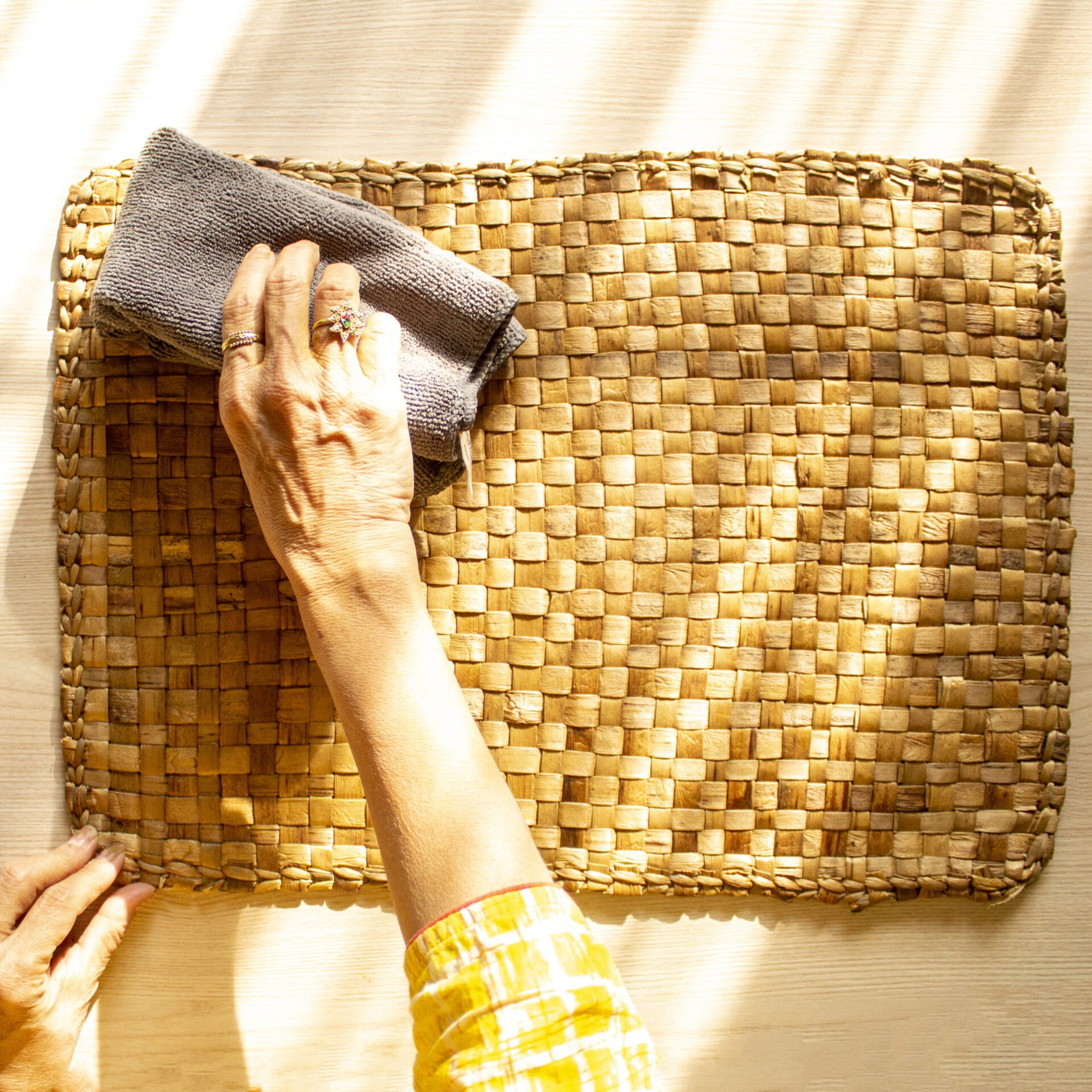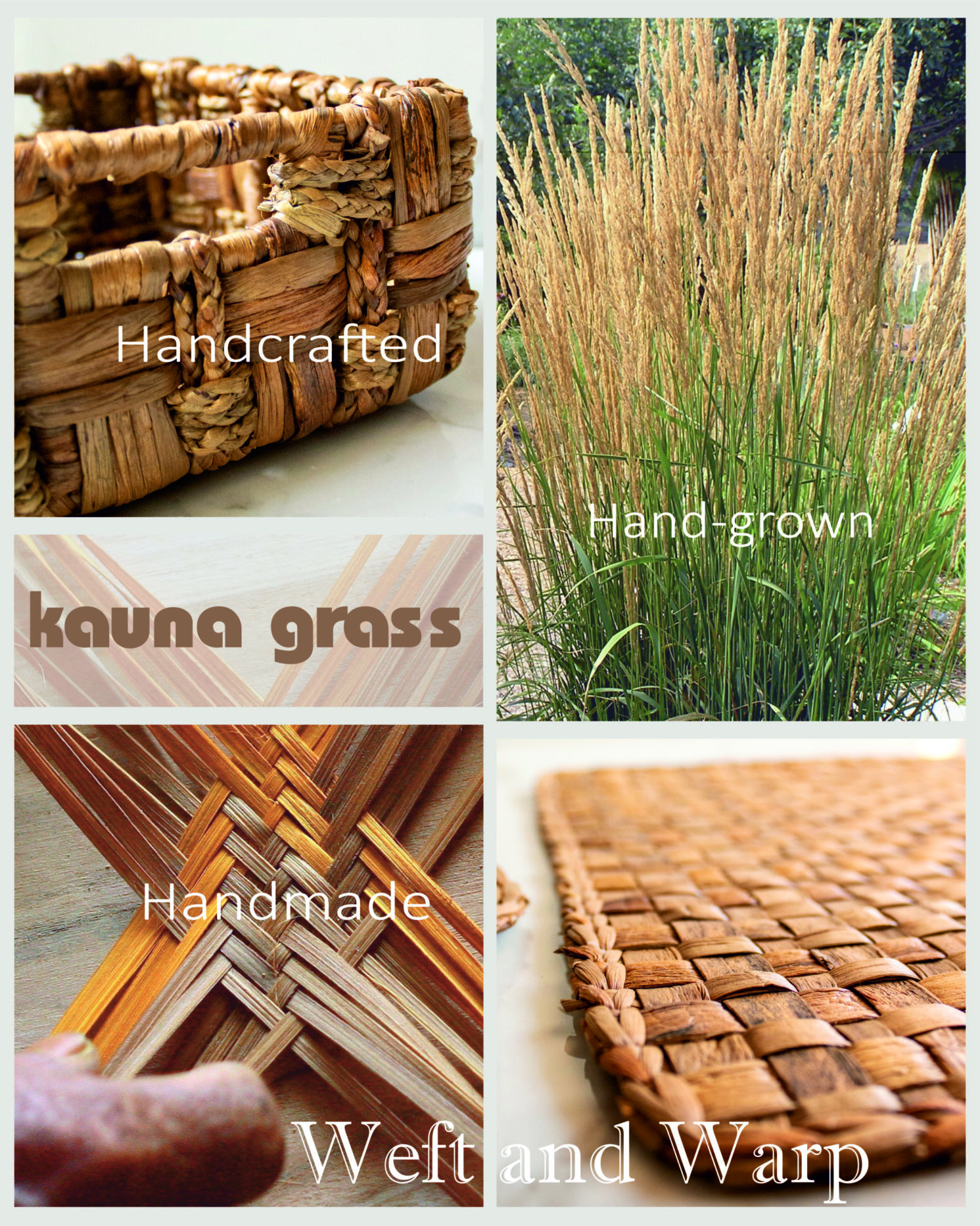
- Natural materials take extreme attention to become sustainable.
- Always avoid placing grass items in a moist or damp environment.
- Immersing grass products in water is a no-no.
- Always use a clean and dry cotton rag to clean the accessories.
- If you need to clean it thoroughly, use a light moist cloth and gently rub it over the affected area; make sure to air-dry it in the sun to restore its lustre.
- Make sure the products are not exposed to too much sunlight, as this might cause grass damage.
Material - Technique - Crafter

It appears to be ordinary grass, and in many respects, it is. Sabai Grass (Eulaliopsis binata), which grows naturally in West Bengal and Odisha’s forest fringe regions, is light, manageable, and dyeable.
This natural fibre, which was formerly used to manufacture rope, is now chicly fashioned into items like baskets, cots, furniture, wall hangings, decorative boxes, and coasters. These items have grown in popularity all around the world since they are handcrafted, organic, and sustainable.
For many individuals in these areas, it has evolved into a source of livelihood, of female empowerment, and even of healing. The grass is manually twisted into strands, and the ring of a bicycle wheel is then used to strengthen the twists. The next step is to smooth out these twists’ jagged edges. The lengthy ropes are wound into bundles after being twisted. Sometimes, the grass is intertwined.
Braided and woven Grass is used to make a variety of items, including baskets, coasters, cutlery stands, and many other items.

